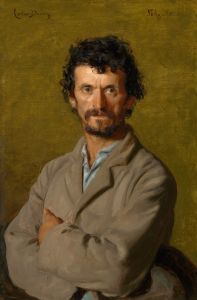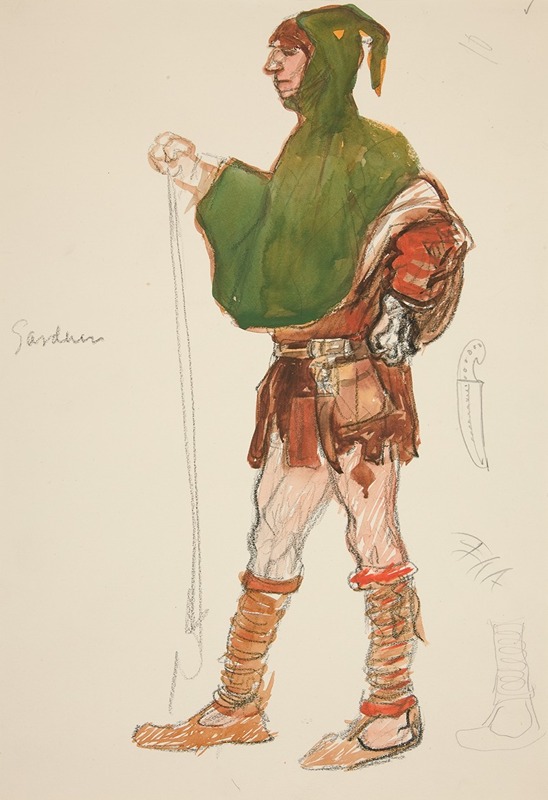
Gardener, costume sketch for Henry Irving’s Planned Production of King Richard II
A hand-painted replica of Edwin Austin Abbey’s masterpiece Gardener, costume sketch for Henry Irving’s Planned Production of King Richard II, meticulously crafted by professional artists to capture the true essence of the original. Each piece is created with museum-quality canvas and rare mineral pigments, carefully painted by experienced artists with delicate brushstrokes and rich, layered colors to perfectly recreate the texture of the original artwork. Unlike machine-printed reproductions, this hand-painted version brings the painting to life, infused with the artist’s emotions and skill in every stroke. Whether for personal collection or home decoration, it instantly elevates the artistic atmosphere of any space.
Edwin Austin Abbey's "Gardener, costume sketch for Henry Irving’s Planned Production of King Richard II" is a preparatory artwork created by the American artist and illustrator Edwin Austin Abbey (1852–1911). Abbey was renowned for his historical and literary illustrations, as well as his large-scale mural works. This particular sketch was part of a series of costume designs intended for a theatrical production of William Shakespeare's play King Richard II, which was planned by the celebrated English actor-manager Sir Henry Irving (1838–1905).
The sketch depicts a gardener, a minor but symbolically significant character in King Richard II. In Act III, Scene IV of the play, the gardener and his assistants discuss the state of the kingdom metaphorically, comparing it to a neglected garden. Abbey's design reflects his meticulous attention to historical accuracy and detail, as he was known for conducting extensive research to ensure his works authentically represented the period in which the play was set. The costume sketch likely incorporates elements of late 14th-century English attire, consistent with the historical setting of King Richard II.
Henry Irving, one of the most influential figures in 19th-century British theater, had a reputation for producing elaborate and visually stunning Shakespearean productions. Although Irving ultimately did not stage King Richard II, Abbey's sketches remain as evidence of the preparatory work and artistic collaboration that went into the planning of such productions. Abbey's involvement in this project highlights his connection to the theatrical world and his ability to translate historical and literary themes into visual art.
The medium of the sketch is typically pen, ink, and watercolor, which Abbey frequently used in his costume designs. The artwork demonstrates his skill in capturing texture, fabric, and the overall aesthetic of the character's attire, ensuring it would be both historically appropriate and visually striking on stage.
Today, this sketch is valued as an example of Abbey's artistic contribution to theater and his dedication to historical fidelity in art. It also serves as a testament to the collaborative nature of theatrical productions during the late 19th century, where artists, actors, and directors worked together to bring Shakespeare's works to life. The piece is part of the broader legacy of Edwin Austin Abbey, whose work continues to be studied and appreciated for its artistic and historical significance.





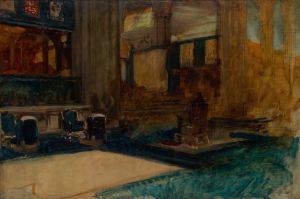
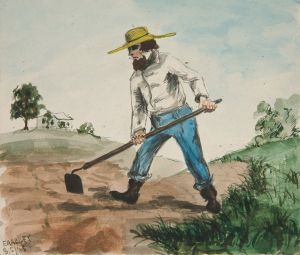
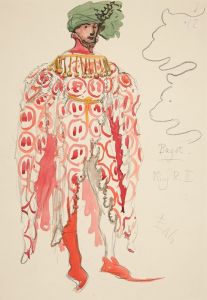
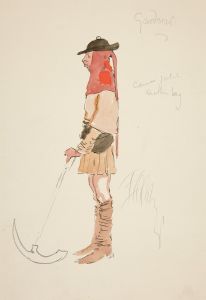
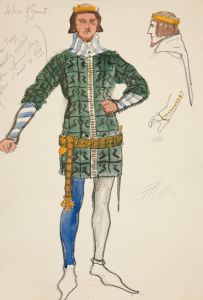
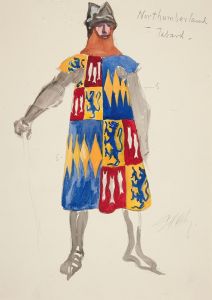
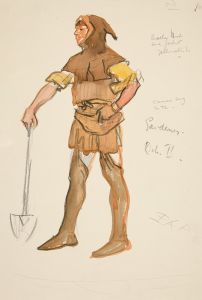
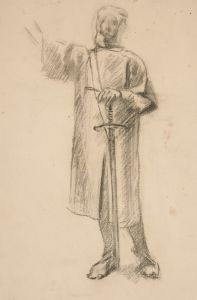
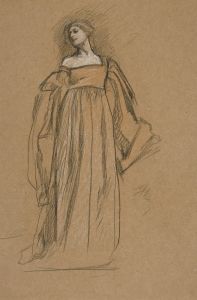
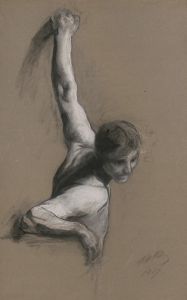
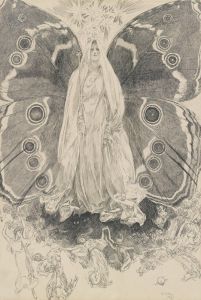
![Designs for theater with black-framed proscenium and boldly colored settings.] [Study for stage light wall decoration, possibly for Caf ̌Crillon](/imgs/249424/s/winold-reiss-designs-for-theater-with-blackframed-proscenium-and-boldly-colored-settings-study-for-stage-light-wall-decoration-possibly-for-caf-crillon-15a7fdab.jpg)
